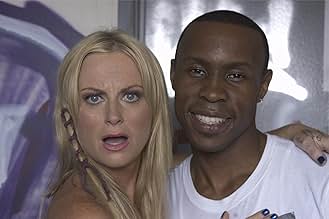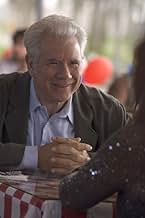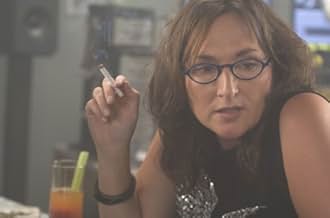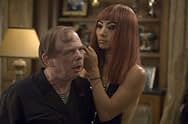During a three-day heat wave just before a huge 4th of July celebration, an action star stricken with amnesia meets up with a porn star who is developing her own reality TV project, and a po... Read allDuring a three-day heat wave just before a huge 4th of July celebration, an action star stricken with amnesia meets up with a porn star who is developing her own reality TV project, and a policeman who holds the key to a vast conspiracy.During a three-day heat wave just before a huge 4th of July celebration, an action star stricken with amnesia meets up with a porn star who is developing her own reality TV project, and a policeman who holds the key to a vast conspiracy.
- Awards
- 1 win & 3 nominations total
- UPU 4 Officer 3
- (as Chris Ciulla)
- Director
- Writer
- All cast & crew
- Production, box office & more at IMDbPro
Storyline
Did you know
- TriviaRichard Kelly consciously sought out actors that he felt had been pigeonholed and wanted to showcase their "undiscovered talents."
- GoofsWhen the home video at the start of the film catches a glimpse of the initial bomb blast, we see the flash and hear the boom at the same instant. Anything close enough to a nuclear blast to hear the boom at the same instant as seeing the flash would be instantly disintegrated.
- Quotes
Krysta Now: Scientists are saying the future is going to be far more futuristic than they originally predicted.
- Crazy creditsAfter the credits, a logo appears of a thumbprint over an American flag with the words: "DON'T TOUCH ME"
- Alternate versionsOriginally running for 160 minutes, Southland Tales premiered at the Cannes Film Festival in 2006 to a disastrous reception. Because of this, it was re-edited and shortened in length as part of the distribution deal. Since the shortened version was shown theatrically and released on DVD, the Cannes cut has been shown on Cable TV and DVD releases in Europe. Some of the changes between the theatrical cut and the Cannes cut are as follows:
- Opens the same as theatrical cut, with home video in Abilene, except with music ('Water Pistol' by Moby) and runs longer. Video is also shown in its original aspect ratio, instead of cropped for 2.35:1.
- Doomsday Scenario Interface is not present in the original cut, it was added to provide background information present in the graphic novels. Instead we have narration from Pilot Abilene explaining the present situation and Treer Corporation.
- The meeting between the Baron and Hideo Takehashi takes place much earlier in the film, Pilot explains the Baron dislikes Takehashi.
- The character of General Teena MacArthur is more fleshed out in original cut, she mainly communicates with General Simon Theory and the Baron.
- Many scenes with dialog between main characters have been extended i.e. scenes with Boxer & Roland, Krysta & Cyndi, Boxer & Starla, Cyndi & Vaughn Smallhouse etc.
- Pilot explains that Bart Bookman is an 'angry man' with a willingness to die.
- Some events that take place are better explained in original cut e.g. Boxer ringing Fortunio before meeting him, Serpentine explaining her actions at the end.
- Features additional effects of the blimp not in theatrical version.
- Features music by Moby not present in theatrical version i.e. 'Ceanograph' is heard in scene giving information on the rift, 'Hotel Intro' is heard as characters visit different sections on the blimp.
- SoundtracksIf I Could Be With You (One Hour Tonight)
Written by Henry Creamer and James P. Johnson (as Jimmy Johnson)
Performed by Louis Armstrong
Courtesy of Columbia Records
By Arrangement with Sony BMG Music Entertainment
As an American viewer currently in France, I'm astounded that there are not more critics praising this feature. I understand the casting choices are odd, but after hearing Richard Kelly speak of the film as a "puzzle" it seems to make more and more sense as I replay the anarchic gonzo like images in my head.
This film is not about the characters, but the situation in which the characters inhabit. It's an experience. I mean do any of us actually "care" about David Bowman in 2001? Yes, the oddities in the film grow astoundingly quirky (bowel movement thermonuclear baby) but see this film simply to experience something new and to insure more films that don't fit the mold are made. I mean that's why we see Jarmusch pictures, right?
- jdanielshaffer
- May 21, 2006
- Permalink
Details
- Release date
- Countries of origin
- Official sites
- Language
- Also known as
- Ma Cô
- Filming locations
- Production companies
- See more company credits at IMDbPro
Box office
- Budget
- $17,000,000 (estimated)
- Gross US & Canada
- $275,380
- Opening weekend US & Canada
- $117,000
- Nov 18, 2007
- Gross worldwide
- $374,755
- Runtime2 hours 25 minutes
- Color
- Sound mix
- Aspect ratio
- 2.35 : 1
Contribute to this page





































